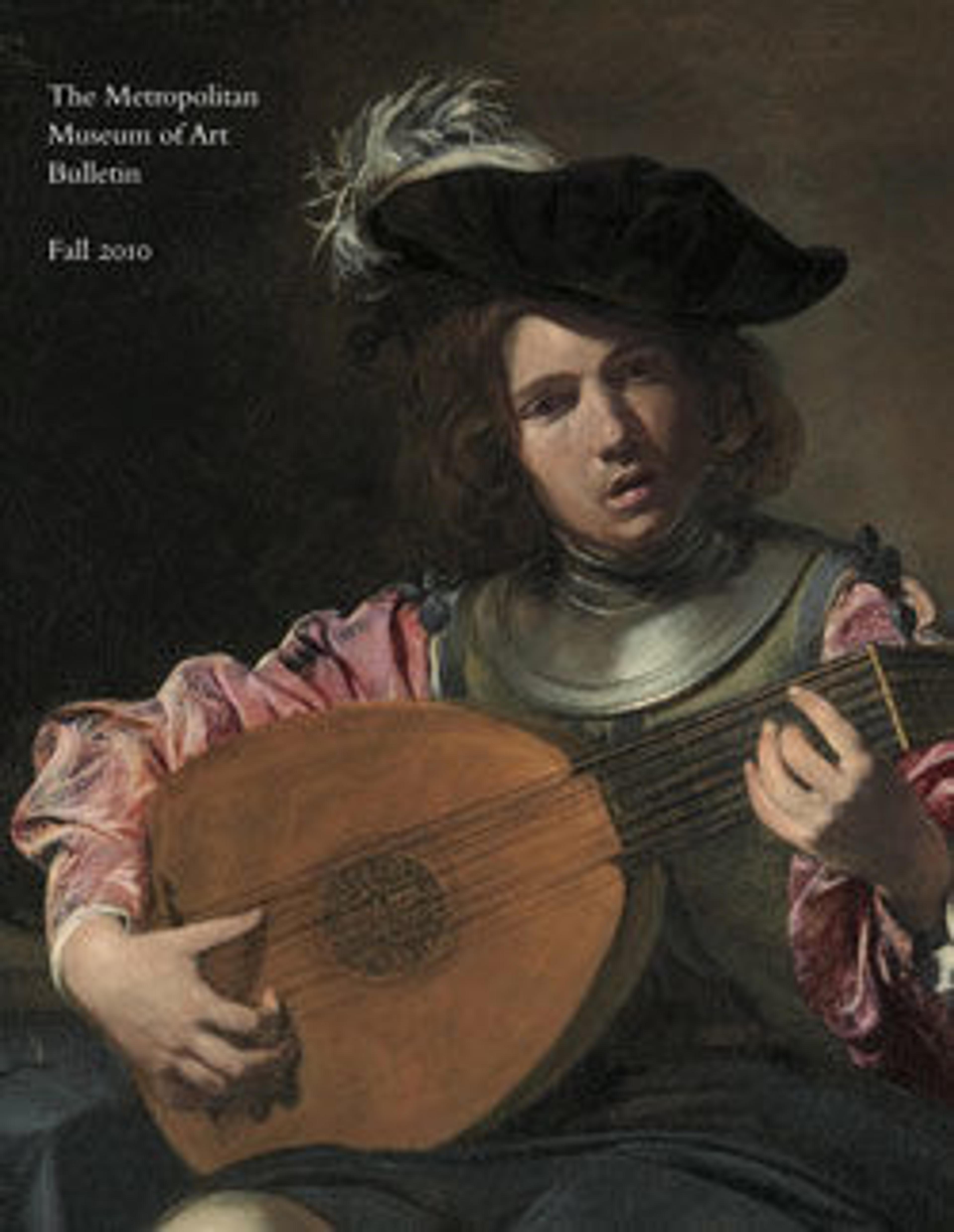Frontal Plate from a Shaffron (Horse's Head Defense)
Most of the surviving Tibetan shaffrons are purely functional pieces of armor with minimal, if any, decoration. This outstanding example is one of the few exceptions to that rule. It is made up of two plates from the center of a shaffron, or head defense, that must originally have been part of an extremely elaborate set of horse armor belonging to a high-ranking Tibetan or Mongolian nobleman. It is the only known shaffron decorated in this style, with dragons amid scrollwork pierced, chiseled, and engraved on the thick iron ground and damascened in gold and silver. The same materials, techniques, and motifs are often seen (although usually on a thinner iron ground) on Tibetan saddle plates, ritual objects such as censers, and luxury items such as pen and cup cases and the reinforcing straps found on the entrance doors of important temples and monasteries. The only other known Tibetan shaffron with truly notable decoration (2004.402) is also in the Museum. That piece is worked in a completely different manner, however, with a textile-like pattern in gold and silver damascening on its flat iron plates.
Artwork Details
- Title:Frontal Plate from a Shaffron (Horse's Head Defense)
- Date:16th–17th century
- Culture:Tibetan
- Medium:Iron, gold, silver
- Dimensions:H. 16 1/4 (41.3 cm); W. 5 3/8 in. (13.7 cm); Wt. 1 lb. 10.3 oz. (745.6 g)
- Classification:Equestrian Equipment-Shaffrons
- Credit Line:Purchase, Arthur Ochs Sulzberger Gift, 2008
- Object Number:2008.291
- Curatorial Department: Arms and Armor
More Artwork
Research Resources
The Met provides unparalleled resources for research and welcomes an international community of students and scholars. The Met's Open Access API is where creators and researchers can connect to the The Met collection. Open Access data and public domain images are available for unrestricted commercial and noncommercial use without permission or fee.
To request images under copyright and other restrictions, please use this Image Request form.
Feedback
We continue to research and examine historical and cultural context for objects in The Met collection. If you have comments or questions about this object record, please contact us using the form below. The Museum looks forward to receiving your comments.
